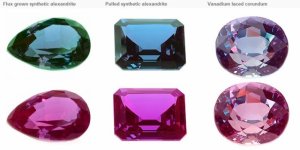- Joined
- Nov 3, 2009
- Messages
- 7,589
If it is not detectable by modern methods, it just means that there is no serious trace radioactivity.
From what I understand, nuking by radioactive isotopes merely alters chrystal lattice of the substance (stone) and it is permanent because initially the stone was stable and not radioactive. So there is no danger in changing tourmaline into, say, radioactive polonium just by nuking it. I mean, it implies treatment which is not totally natural but still...
As long as Geyger count does not show scary numbers it should be fine.
From what I understand, nuking by radioactive isotopes merely alters chrystal lattice of the substance (stone) and it is permanent because initially the stone was stable and not radioactive. So there is no danger in changing tourmaline into, say, radioactive polonium just by nuking it. I mean, it implies treatment which is not totally natural but still...
As long as Geyger count does not show scary numbers it should be fine.





300x240.png)